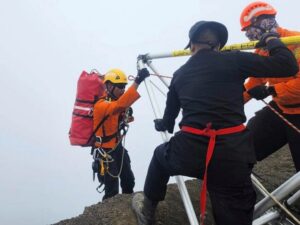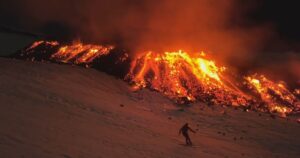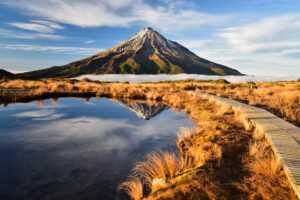Since the end of last week, seismic activity has rocked Iceland. On Monday, over 900 earthquakes hit southwest Iceland. Within 48 hours, there had been over 2,000. Since then, residents have braced for a major volcanic eruption.
Earthquakes are still occurring in the Reykjanes peninsula. Though the earthquakes are getting weaker, scientists still believe an eruption is on its way. They are hoping it will be smaller than previously anticipated.
These thousands of earthquakes have torn apart roads and buildings. The Fagradalsfjall volcano seems to be creeping ever closer to an eruption. A 15-kilometer magma tunnel has formed under the peninsula.
The prime minister has tried to calm Icelanders, but the country remains in a state of emergency. Last Friday, many people started fleeing Gridavik. On Saturday, a mandatory evacuation order took place.
The seismic activity map of Iceland right now is…jaw-dropping.
These are quakes that have happened in just the last 6 hours. The Reykjanes Peninsula is smothered in thousands of small quakes and some mid-magnitude ones.
That’s what happens when rising magma breaks rocks. pic.twitter.com/cia8wdC7Ad
— Dr Robin George Andrews 🌋☄️ (@SquigglyVolcano) November 11, 2023
Five minutes to retrieve valuables
By Sunday, the magma had moved less than 800m from the opening of the volcano. Volcanologists think an eruption on the side of the volcano closest to Gridavik is imminent.
Over 3,000 residents have left the small fishing town. They had just five minutes each to return to their homes and collect their passports, medicines, and pets on Sunday. They were shocked to see wrecked houses and giant cracks in the roads.

Huge fissures have appeared in the roads of the small fishing town. Photo: Brynjar Gunnarsson
Only one person per household was allowed into town to pick up belongings, accompanied by police. Coast guard helicopters circled constantly, in case returning residents needed to be airlifted out. It is one of the biggest evacuations Iceland has ever had. Locals who have lived in this Land of Fire and Ice for decades told the BBC that they “have never felt something like that” before.

A large tear in the ground at a golf course in Grindavik. Photo: Ragnar Visade/RUV
Quiet for 800 years
In the last few years, there have been three eruptions on the peninsula, but these were further from populated areas. Before the 2021 eruption, vulcanism on the peninsula was dormant for 800 years. The previous fissures have all been relatively small, and none were close to populated areas.
The difficulty is that no one knows when an eruption will happen, or what its exact position will be. It could be within hours, days, or weeks.
The Icelandic Meteorological Office said, “At this stage, it is not possible to determine exactly whether and where magma might reach the surface.” Experts think it may be sooner rather than later and are monitoring the volcano constantly.
Wow!! Impressive video of one of the recent earthquakes in #Iceland….
The noise 👀😱
Via: @mondoterremoti pic.twitter.com/4LXw3SDu4j
— Volcaholic 🌋 (@volcaholic1) November 10, 2023
s=”p1″>
Iceland is one of the most geologically active places on Earth, with 32 active volcanoes and 600 hot springs. It sits on the mid-Atlantic ridge and the border of tectonic plates. The plates moving apart has created a seismic and volcanic hotspot. Iceland averages one eruption every five years.





